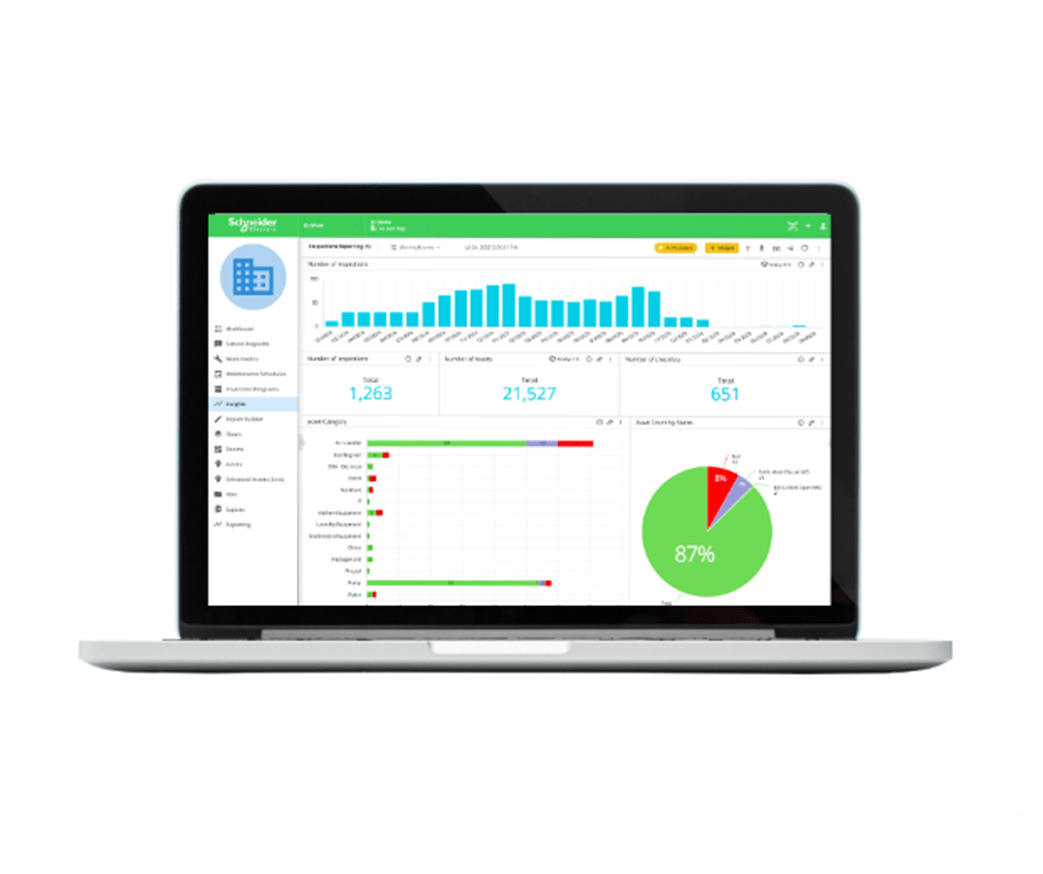Capital Asset Planning: The Future of Resilient Infrastructure
What is Capital Asset Planning?
Imagine standing inside your company’s flagship facility—whether it’s a distribution center, corporate office, or retail hub—and knowing exactly which systems are approaching failure, which require investment next quarter, and which can be deferred without risk.
 This is the promise of Capital Asset Planning (CAP): a transformative approach to infrastructure management that empowers business leaders to make smarter, more strategic decisions about their facilities. This approach is not based on guesswork or outdated spreadsheets, but rather on a dynamic, real-time system that tells the full story of your assets.
This is the promise of Capital Asset Planning (CAP): a transformative approach to infrastructure management that empowers business leaders to make smarter, more strategic decisions about their facilities. This approach is not based on guesswork or outdated spreadsheets, but rather on a dynamic, real-time system that tells the full story of your assets.
CAP is our software-enabled solution designed to help private enterprises build a comprehensive, searchable inventory of their physical assets. From HVAC and IT equipment to fleet vehicles and switchgear, CAP delivers a clear view of each asset’s health, cost, and operational readiness. By combining real-time data, intuitive visualization tools, and expert consulting, CAP transforms raw information into actionable insight. It is a centralized platform where maintenance history, lifecycle forecasts, and capital planning converge. This can give you the clarity to prioritize investments, optimize performance, and protect your bottom line.
Why is CAP Important? The Cost of Inaction
In many organizations, capital planning is reactive. It is triggered by breakdowns, not strategy. Deferred maintenance accumulates and emergency repairs disrupt operations. The result? Higher costs, lost productivity, and avoidable risk.
CAP changes this narrative by helping businesses take control of their asset strategy:
-
Providing a Strategic Roadmap: With detailed asset data and lifecycle forecasting, CAP enables you to plan ahead, allocate capital wisely, and avoid costly surprises that can derail operations or budgets.
-
Reducing Risk: Unexpected failures of critical systems can halt operations and damage your brand. CAP identifies vulnerabilities early, so you can act before issues escalate.
-
Optimizing Operations: By shifting from reactive to proactive maintenance, CAP reduces downtime, extends asset life, and improves workforce productivity—directly impacting your bottom line.
-
Empowering Better Decisions: Real-time dashboards and visual floorplans make complex data accessible, enabling faster, more informed decision-making.
CAP delivers measurable results by reducing capital costs by up to 50% through better planning and economies of scale, accelerating implementation with a quick 90 day set-up, and keeping costs low. With ongoing reporting, recommendations, and oversight of high-value assets, CAP enables you to strategically maintain safe, efficient, and resilient infrastructure.
How Does CAP Work?
The CAP process begins with a comprehensive build-out of your asset inventory. This includes onsite audits and data collection for all major systems, including plant equipment, kitchen appliances, HVAC, IT infrastructure, and more. Key data points such as square footage, equipment type, maintenance history, and expected costs are captured and analyzed.
From there, the platform delivers:
-
Dynamic Visualization: Interactive maps and dashboards provide a clear view of asset condition and operational readiness.
-
Lifecycle Forecasting: Predictive analytics help you plan for replacements and upgrades years in advance.
-
Work Order Integration: Track reactive vs. proactive maintenance, labor hours, and costs, all in one place.
-
Strategic Reporting: Annual reports and capital planning tools support long-term budgeting and investment decisions.
Schneider Electric is your CAP partner from initial configuration and data input to ongoing consulting and support. Our unique program ensures that your team is equipped with the tools and insights needed to succeed in the long-term by providing:
-
Tailored Implementation: The software is configured to your facility’s unique needs, with expert-led data collection and analysis.
-
Ongoing Support: Real-time, one-on-one assistance ensures that your team can fully leverage the platform’s capabilities.
-
Actionable Recommendations: Expert consultants provide strategic guidance to optimize preventative maintenance and capital planning.
Who are Ideal CAP Candidates?
CAP is built for businesses that manage complex, high-value assets and are ready to shift from reactive maintenance to a proactive, data-driven strategy.
The most successful CAP clients are:
-
Operationally Complex: Managing interdependent systems like HVAC, IT, fleet, and production equipment across multiple sites.
-
Strategically Minded: Focused on long-term planning, cost control, and maximizing asset performance.
-
Data-Driven: Ready to leverage real-time insights and lifecycle analytics to guide capital investments and maintenance priorities.
-
Collaborative and Disciplined: Committed to cross-functional coordination between facilities, finance, and operations teams to act on strategic recommendations.
The ideal candidates recognize that infrastructure is a business asset, not just a cost center. They are ready to manage it with the same rigor and foresight as any other part of the enterprise.
Case Study: MGM Resorts
 In 2021, MGM Resorts International engaged Schneider Electric in a strategic partnership to enhance operational efficiency and long-term asset performance across its expansive property portfolio. What began as a utility data and performance tracking initiative evolved into a comprehensive CAP engagement. Faced with the challenge of managing nearly 100 million square feet of complex infrastructure, MGM sought a solution that could bring clarity, structure, and foresight to its capital planning process. Schneider Electric responded with a full-scale audit of over 17,000 assets—from air handlers and chillers to pumps and kitchen equipment—across all MGM properties nationwide.
In 2021, MGM Resorts International engaged Schneider Electric in a strategic partnership to enhance operational efficiency and long-term asset performance across its expansive property portfolio. What began as a utility data and performance tracking initiative evolved into a comprehensive CAP engagement. Faced with the challenge of managing nearly 100 million square feet of complex infrastructure, MGM sought a solution that could bring clarity, structure, and foresight to its capital planning process. Schneider Electric responded with a full-scale audit of over 17,000 assets—from air handlers and chillers to pumps and kitchen equipment—across all MGM properties nationwide.
This data-rich collaboration has enabled MGM to move from reactive maintenance to proactive, insight-driven decision-making. By continuously analyzing asset condition, lifecycle stage, and operational burden, the partnership has allowed MGM to prioritize investments based on risk, cost, and performance impact. This resulted in a more agile and efficient capital planning process that supports both short-term operational goals and long-term infrastructure resilience. Through this ongoing engagement, MGM has strengthened its ability to deliver exceptional guest experiences while maintaining the reliability and efficiency of its facilities at scale.
In Conclusion
Infrastructure is the backbone of operational resilience. Organizations that embrace CAP will be best positioned to smartly manage their physical assets, enabling strategic investments, reducing risk, and ensuring long-term sustainability.
If your organization is ready to move from reactive maintenance to proactive, strategic asset management, partner with Schneider Electric, today. Start a conversation with our team to explore how Capital Asset Planning can support your mission and strengthen your infrastructure for the future.